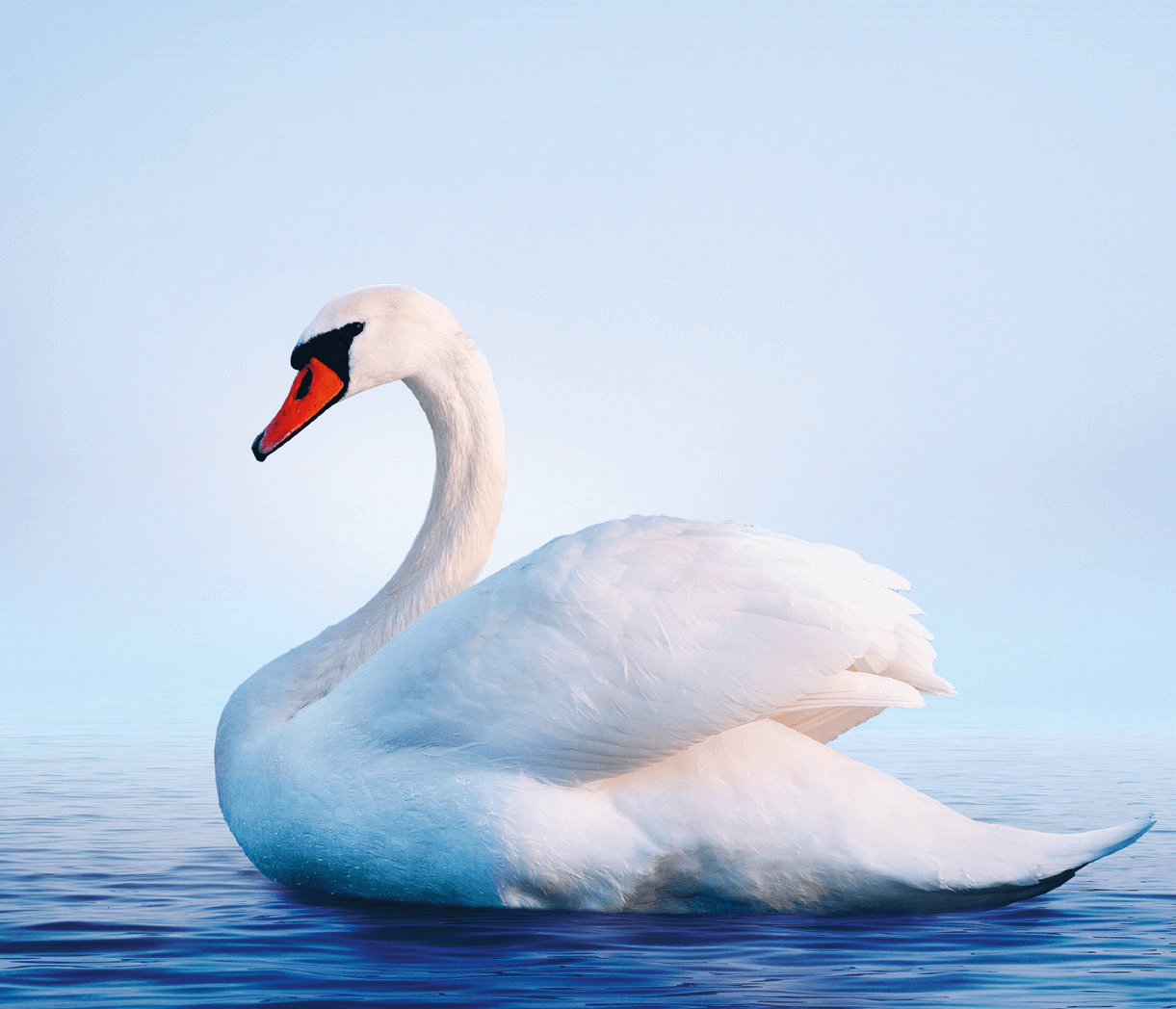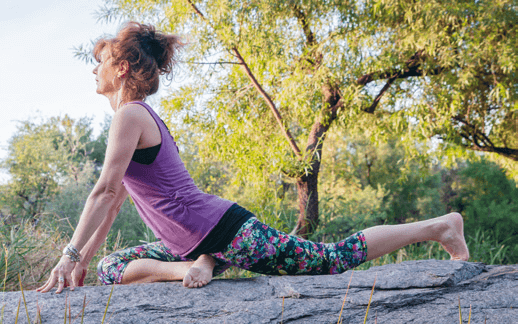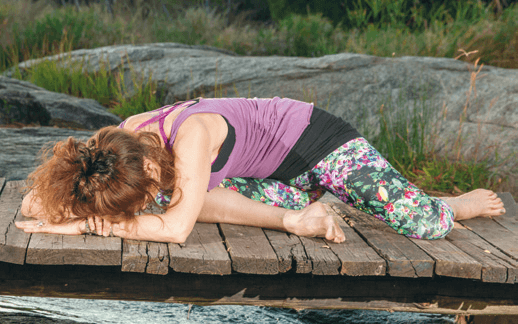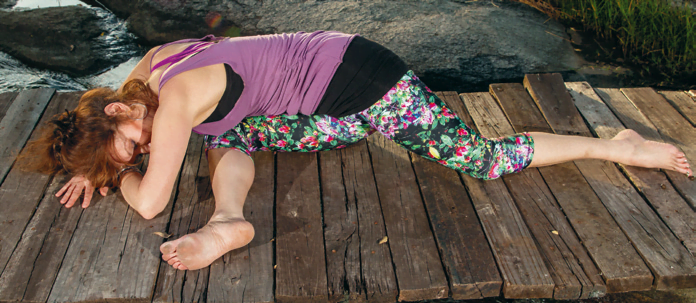Swan Sequence
Swan Sequence
Article in the OmYoga Magazine – February 2019 issue: A gentle yin sequence based on the swan series of poses. By Regina Kerschbaumer
In yin yoga we cultivate a beginner’s mind. The names of the postures have deliberately been changed so that nobody can say you are doing it incorrectly. It it is not about alignment, it is about the functionality of the ‘shape’.
In yin yoga we reach beyond the superficial muscle tissues and delve deep into our joints. Tendons and ligaments are yin tissues which are targeted and stretched to improve the flexibility of our joints. The muscles need to be relaxed and soft when we stretch in a yin way. Yin yoga creates space in the body and also space in the mind – stillness.
You can create a soft fluid sequence completing the whole of one side and then continue into a symmetrical forward bend or a back bend – creating an intersection between the two sides – before completing the asymmetrical postures on the other side.
Students may prefer to do the ‘perfect’ pose – sleeping swan (the yin name for the pigeon) possibly because it feels so much deeper and looks so much more impressive than the other versions of swan. I always remind them it is not about the aesthetics – it is all about the functionality.
I sometimes teach all of the swan variations in a sequence because the target areas are so different in the back leg and this way students can really feel the benefit in the variations.


1. Butterfly
Starting in the butterfly pose. Sit with the soles of the feet together and lean forward. Hold for 3-5 minutes. When the feet are closer to the groin it will give you a deeper inner thigh (groin muscle) stretch;
if further away, it will give you more of a back stretch. You can see my very externally rotated hips, the heads of my femur bones hit the hip socket and creates compression – my knees cannot go down towards the floor; however, this is still a deep inner thigh and back stretch for me.

2. Half Butterfly
Slowly come up and extend your left leg out wide then go towards the straight left leg into half butterfly. Soften the knee and relax into the shape – hold for 2-5 mins. Half butterfly stretches the tendons and ligaments of the hamstrings and adductors of the straight leg and all along the spine – stimulating the kidney and urinary and liver meridians’ chi (energy).

3. Up-Swan
Slowly stack your spine and come up, swing the left leg back, square your hips towards the floor or roll the left hip towards the floor, come onto your fingertips (to stimulate the upper body meridian chi – lungs, heart, small and large intestines) and stay here for the up-swan. Hold it for 1-2 mins. You could also take hold of the back foot. This is a back bend with a strong stretch into the hip flexor of the back leg. When we stretch the front layer of the body we stimulate the spleen and stomach, meridian chi and fire-up the kidney and urinary bladder chi with compression in the back. Back bends help us to regain our lumbar curve and can be very helpful to relieve back issues.

4. Sleeping Swan
Slowly come up and extend your left leg out wide then go towards the straight left leg into half butterfly. Soften the knee and relax into the shape – hold for 2-5 mins. Half butterfly stretches the tendons and ligaments of the hamstrings and adductors of the straight leg and all along the spine – stimulating the kidney and urinary and liver meridians’ chi (energy).

5. Baby Swan
Lean towards your right-side, swing the left leg half way back (at a 90 degree angle) into the deer (I like to call it the baby swan) and hold for 2-5 mins. The target areas of the back leg are the adductor muscles of the groin which stimulates the liver meridian chi. This posture is also a wonderful alternative for the swan if the student has any knee issues as there is no weight on the front knee.

6. Flying Swan
Encourage the buttocks towards the floor. Come out of the baby swan, lifting the torso and slide the front leg parallel to the front of your mat, extend the back leg and bring the torso towards the earth. The flying swan is a strong stretch for the hip rotators of the front thigh and also stretches the quadratus lumborum in the back body, giving you a sweet release of any tension in the back (hold for 2-5 mins).



7. Downward Dog
From here you can step back into downward facing dog to stretch the right leg out. Swing the left leg forward and start the whole sequence again on the other side. Asymmetrical postures create a strong energetic pull in the body which we can now balance with a symmetrical shape/posture.
8. Caterpillar
Once you complete the sequence on the left side with the flying swan, swing the back leg forwards and come into a straight leg forward bend, the caterpillar. Soften and relax the muscles of the hamstrings: you can place your hand behind the knees to soften into the knee joints. Do not pull the toes toward you, this engages muscle tissues and makes the yin posture counterproductive. Soften the back muscles and the back of your legs, hold for 3-5 mins. Caterpillar stretches along the longitude ligaments of the spine and the lumbar thoracic fascia as well as the tendons and ligaments of the hamstrings which stimulate our kidney and urinary bladder chi.

Once completed, slowly come up and relax onto your back to feel the rebound. During the rebound we connect into the sensations within. Being mindful of these sensations while exploring the body’s inner landscapes is very relaxing and deeply meditative. The tingling, pulsing and streaming you will feel is your lifeforce – your chi. This is the purpose of yin yoga.
Stay in here for savasana.
By Regina Kerschbaumer of the Yoga Orchid Yinstitute
https://www.ommagazine.com/PREVIEWS%20AND%20SPECIALS/OM93SPECIAL/OM93SPECIAL.html#p=13
Articles in Om Yoga Magazine – #Trending Yoga Styles – July 2019 edition:
https://www.ommagazine.com/PREVIEWS%20AND%20SPECIALS/OM99SPECIAL/OM99SPECIAL.html#p=9
